Barrumbi Kids screenings bring joy to the place the story began
Paul Gartside
30 Sep 2022
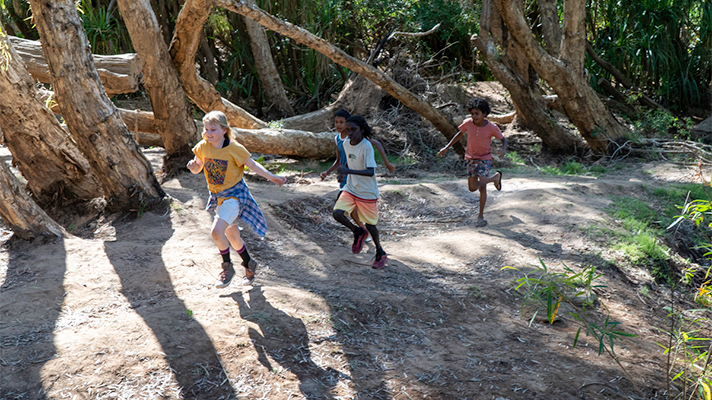
The upcoming kids’ adventure-drama series Barrumbi Kids is set in a fictional town 200km outside of Katherine, NT. Its story, adapted from Leonie Norrington’s successful books, is inspired by the author’s own childhood spent in the similar, real towns of Wugularr (Beswick) and Barunga. It was vital to producers Monica O’Brien and Danielle MacLean and co-producer Julia Morris that the production consulted closely with Indigenous cultural advisers from these communities, and that people from these towns were involved in every aspect of the production. So it’s fitting that these communities—especially the local kids who make up much of the main cast—were among the first people in the world to see episodes from the series, in several screenings in the Northern Territory this month. As the ACTF’s Development Manager working on Barrumbi Kids, I had the honour of being able to visit these communities and attend the screenings, as the people on whose lands the show was filmed, and who helped bring its story to life, experienced seeing it on screen for the first time.
The first of these screenings was at the Katherine cinema, where kids from the cast—including leads Nick Bonson and Caitlin Hordern—as well as their families, members of the production team and crew, and a cinema full of locals all gathered, abuzz with energy and anticipation. There was a palpable sense of pride that the show’s production had been based in town. A camera crew from NITV filmed short interviews with the cast as well as eager audience members. I overheard excited conversations about the various familiar Katherine locations that had been used for filming. But of course, the biggest reaction came from the kids. The cheeky antics of the characters on screen got big laughs from the children in the audience—including the cast members, many of whom were first-time actors. After months of hard work on location, they were enthralled to finally be seeing the series completed, with its stunning landscapes, vibrant soundscape and music, and joyful character-based fun. The young cast members all cheered and playfully teased each other as they appeared onscreen. As the credits of each episode rolled, the audience applauded, eager for the next instalment. Afterwards, producers Monica and Danielle thanked everyone who had contributed to the production and invited the kids from the cast to stand for another round of applause. A couple of them hesitantly took the stage, but others were too nervous—self-conscious despite having just watched themselves shining on the big screen.
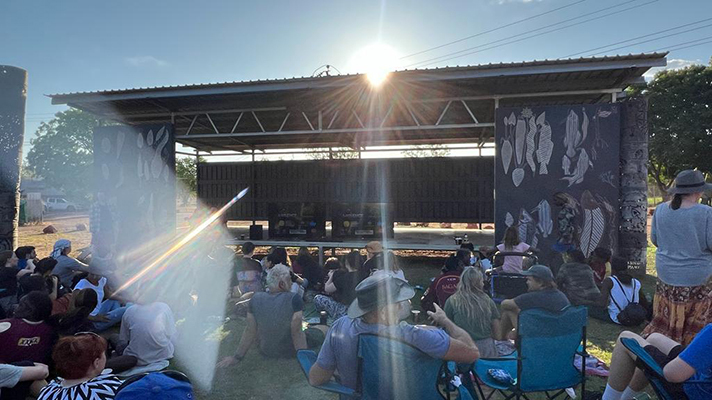
Over the next two days, the producers screened episodes in both Barunga and Wugularr (Beswick). At the Barunga School, watching an episode shot in the very school grounds where we were gathered, kids from the community laughed and roared with delight, and called out by name each person they recognised on screen, as well as the locations—their classrooms, their streets, their home. They were elated to see these slices of their lives as part of a TV show. Community members Scott Hall and Revonna Lane, who served as cultural consultants to the production, were there among dozens of other members of the community, along with author Leonie Norrington, local Member of Parliament the Hon. Selena Uibo, and principal of the Barunga School Malcolm Hale, who helped the producers choose many of their cast from among his students. The second episode we watched that evening was just reaching its most tense moments—with one of the lead characters landing in serious peril—when the screens went black, the air conditioners silent and lights dark. The power had blacked out, the episode’s drama cut short, unresolved. Amused but unfazed, the audience filtered outside onto the school oval. As the grown-ups packed away the screening equipment, the kids entertained themselves by kicking a footy, running races and performing acrobatic flips across the grass in the gathering dusk.
The following day, an even larger crowd of locals and visitors assembled on the grass in front of the Djilpin Arts Centre in Wugularr (Beswick). Esther Bulumbara, Traditional Owner of this area, and acclaimed artist Frankie Lane—both of whom advised the Barrumbi Kids producers as senior Indigenous consultants—watched from pride of place, as families gathered, children played, and neighbourhood dogs roamed hoping for dropped leftovers from the barbecue. As the gradual sunset cast cooling shade over the crowd, everyone settled in to watch the show. Once again of course, the event truly belonged to the many children who eagerly watched their peers starring on TV for the first time, with their breathtaking Country showcased in all its glory onscreen. Dusk began to fall and a few of us headed back to Katherine; roaming wild buffalo and donkeys make the roads unsafe after dark. But the producers were staying the night at Djilpin, and so they remained with the rest of the community, continuing to watch Barrumbi Kids under the stars.
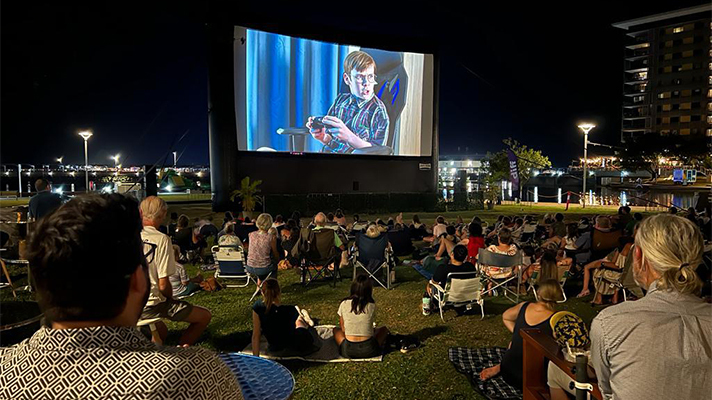
The week of screenings was rounded out by two events at the Darwin International Film Festival—one outdoor showing to big crowds in the city’s beautiful Waterfront precinct, and a final screening at a packed cinema on the Festival’s final day.
As the ACTF’s representative at these events, it was a whirlwind week-long adventure from Melbourne’s final throes of chilly winter, to the baking heat and glorious sunshine of the Northern Territory. Despite working with the producers throughout the development and production of Barrumbi Kids, nobody from the ACTF had been able to visit the locations during filming, due to the COVID restrictions in effect at the time.
I’m extremely grateful I had the opportunity to visit these stunning places, meet some of the wonderful people from the communities where the show was made, and be present to witness their excitement and happiness as they enjoyed this unique and remarkable series for the first time. Hearing the laughter and seeing the beaming smiles on these kids’ faces was a powerful reminder of how vital it is for all children to see their lives reflected on screen.
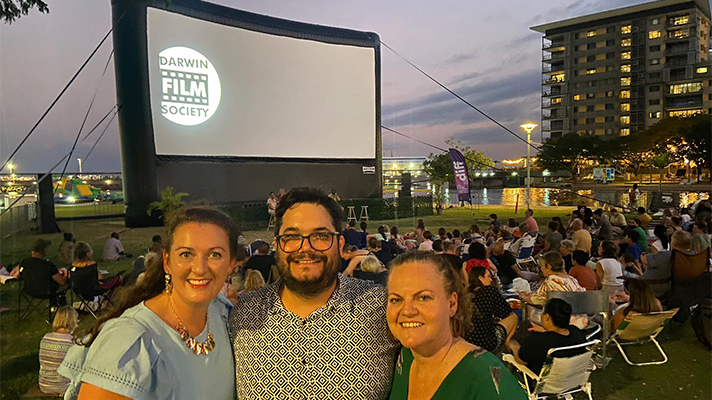
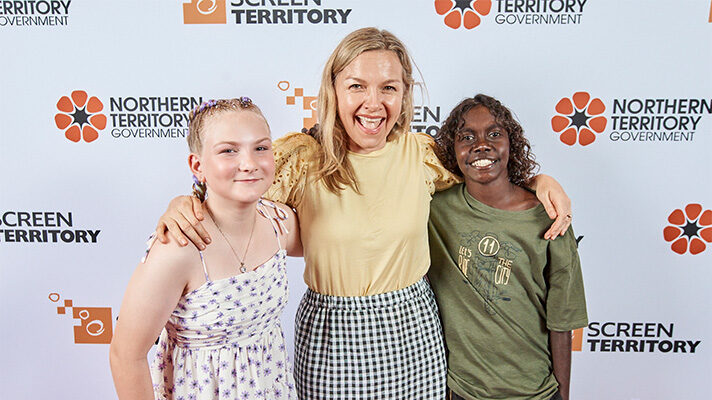

Comments
Comments for this post are open.